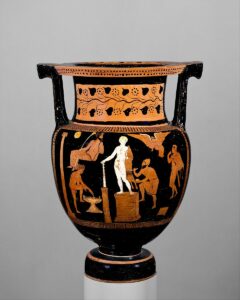Projects
Craft in Ancient Greek Sacred Spaces
Although it is rarely acknowledged, the appearance of Greek sanctuaries was very much shaped by the skill and quality of craftsmen, who built shrines and temples, who carved and inscribed altars and statues, and who wove, turned, cut, cast, moulded, hammered or created in a myriad other ways the objects that made the sanctuary a wonder, a thauma, for visitors mortal and divine. Accounts of sanctuaries’ construction programmes, like in Athens or Epidauros, testify to the many crafts that were enlisted to help build and decorate the necessary buildings, as to the payment received for the work. From these and other sources it is becoming increasingly clear that the social position of skilled craftsmen and in some cases, craft women, must have been rather better than ancient literature suggests. And their self-awareness of this can arguably be traced back to the archaic period, when the first monumental votives to working men, and some women, appear, for example, among the Akropolis dedications.
The research of Helle Hochscheid investigates the phenomenon of craftsmen in sanctuaries in Athens and beyond, as makers of the sacred space and everything in it; as dedicants in their own right; and as participants in the ritual, civic, and residential aspects, as well as the professional communities of the archaic and classical polis.
Keywords: ancient Greek craft, dedications, craft communities, ownership, makers


